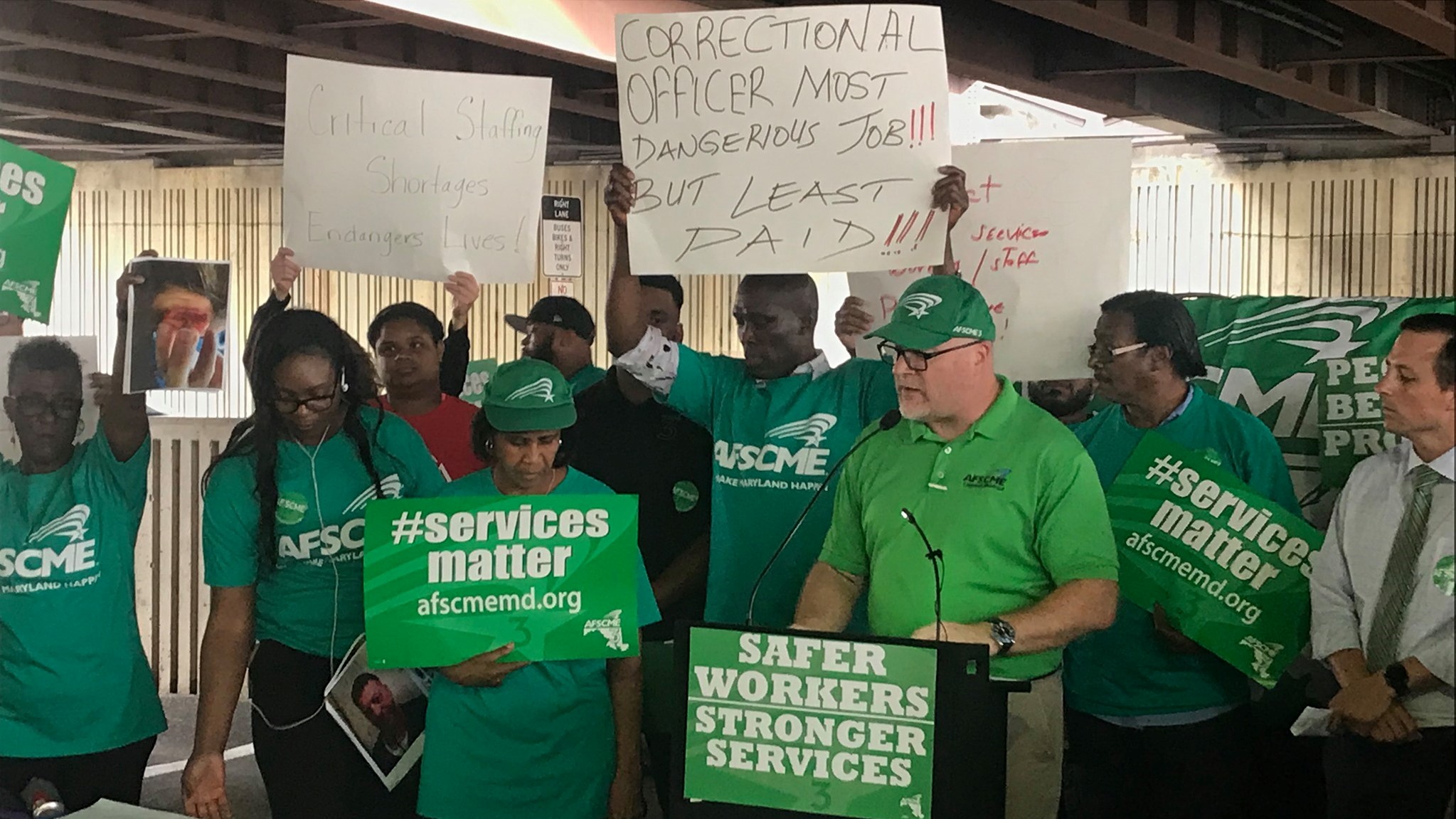More than 25,000 state and higher education employees in Maryland are shining a light on a critical shortage of state workers, which is hampering their ability to provide critical services, particularly to vulnerable Marylanders.
After a summer of no answers or solutions from management and increasing violence in Maryland state facilities, state employees are ready to take their fight to the next level.
This summer, after concluding a series of contractually required meetings with the State of Maryland to discuss staffing levels and the budget for the next fiscal year, members were left with no answers and less confidence in Gov. Larry Hogan’s administration. In meetings with the secretaries of various agencies, members got no specifics as to how the Hogan administration plans to resolve a growing staffing crisis.
Standing with community groups and legislative allies at rallies on Aug. 7 in Baltimore and Aug. 17 in Ocean City, AFSCME Council 3 members drew attention to the increasingly dangerous working conditions created by systematic underfunding and understaffing.
Just last month, a worker at a psychiatric hospital in Catonsville was hospitalized after being attacked on the job and remained in intensive care for over five days.
As Council 3 President Patrick Moran wrote in a Sept. 2 column published in the Capital Gazette, the newspaper in the state capital of Annapolis: “Chronic understaffing has meant state employees workloads have expanded to the breaking point, mandated overtime is skyrocketing, and work environments are increasingly dangerous.”
“Our state’s social workers who handle cases of child and elder abuse struggle to manage hundreds of cases. Our prisons’ corrections officers are forced to monitor inmates at a dangerous ratio of 100 to 1. Our juvenile services staff can’t perform educational programs because there is not enough staff to ensure a structured and safe environment,” Moran wrote. “Our staff in state mental hospitals, who are working to safeguard the health and safety of Marylanders identified as a risk to themselves or others, lack the staff to adequately respond to an incident.”
Moran said mismanagement and incompetence by the Hogan administration is causing staffing levels to drop to unprecedented levels. Council 3 members are calling on the Maryland General Assembly to convene emergency hearings this fall to identify the cause of the staffing crisis and find solutions. Members are holding meetings at worksites across the state to sign petitions and write letters to their legislators asking for their support in their fight to convene these hearings.
According to a recent report released by Council 3:
There were 1,260 vacancies in the Department of Public Safety and Correctional Services at the end of 2018. The agency has hired 127 corrections officers this year, however, this equals the number of people who left DPSCS this year.
The Department of Human Services, which provides protective and support services to at-risk individuals, cut 19 full-time and one part-time position, mostly in Anne Arundel, Frederick, Prince George’s and Wicomico counties and Baltimore City. That’s part of an 8% reduction in staffing across the agency this year.
There are 38 vacancies in the Department of Juvenile Services, which provides services to committed and detained youth. That’s on top of more positions lost due to attrition.
And the Department of Health, as of July 2019, had 662 openings in critical positions in state and local health departments.

